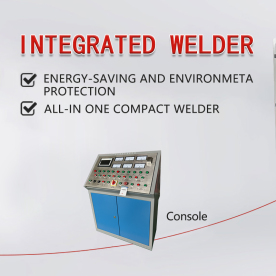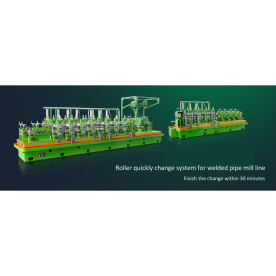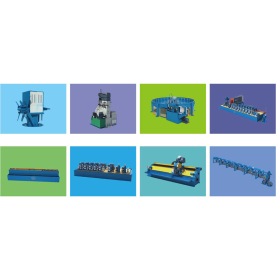[Pipe mill production line]Maximizing Efficiency and Output: A Comprehensive Guide to Pipe Mill Production Line Technologies and Best Practices
News 2024-12-23
In the ever-evolving landscape of manufacturing, the pipe mill production line stands as a critical component for industries that require high-quality steel pipes. From construction and plumbing to oil and gas transportation, the efficiency and reliability of a pipe mill can significantly influence a company’s bottom line. This article explores the capabilities, technologies, and best practices of pipe mill production lines, providing insights for businesses looking to enhance their operational performance.
**Understanding the Pipe Mill Production Line**
At its core, a pipe mill production line is designed to produce pipes from various materials, primarily steel. The process begins with raw materials, typically in the form of steel coils, which undergo several manufacturing stages, including slitting, forming, welding, and finishing. Depending on the specifications and requirements, the pipe mill's configuration and technology can vary greatly.
**Key Components of a Pipe Mill Production Line**
1. **Coil Preparation**: The process starts with the unloading and storage of steel coils. Effective coil preparation is crucial as it sets the stage for subsequent processing. Operators must ensure coils are of high quality and devoid of defects.
2. **Slitting and Shearing**: Once the coils are prepared, they must be slit into narrower strips. This process is vital for creating strips that will be formed into pipes. Accurate slitting reduces waste and ensures uniformity in the production process.
3. **Forming**: In this stage, the slit strips are shaped into a cylindrical form. This is achieved through a series of rollers that gradually bend the material into the desired shape. The accuracy of the forming process is essential, as any deviations can lead to defects in the final product.
4. **Welding**: As the formed strips move through the pipe mill, they enter the welding section where the edges are joined together. Depending on the type of pipe being produced, various welding techniques may be used, such as high-frequency electric resistance welding (HF ERW) or submerged arc welding (SAW). The quality of the weld is critical to the integrity and performance of the pipe.
5. **Finishing Processes**: Post-welding, pipes often undergo several finishing processes including cutting to length, surface treatment, and non-destructive testing (NDT). These steps ensure that the pipes meet specific standards and are free from imperfections that could compromise their functionality.
**Technological Advancements in Pipe Mill Production Lines**
The integration of advanced technologies into pipe mill production lines has revolutionized the manufacturing process. Automation and digitalization play pivotal roles in enhancing efficiency, precision, and output. Modern pipe mills often incorporate the following technologies:
1. **Automated Control Systems**: These systems enable real-time monitoring and control of the production line, allowing for adjustments to be made quickly in response to any variances in the operation process.
2. **Robotics and AI**: The use of robotic arms for material handling and AI-driven analytics for predictive maintenance are becoming increasingly common. These technologies reduce labor costs and minimize downtime.

Maximizing Efficiency and Output: A Comprehensive Guide to Pipe Mill Production Line Technologies and Best Practices

Maximizing Efficiency and Output: A Comprehensive Guide to Pipe Mill Production Line Technologies and Best Practices
**Best Practices for Enhancing Pipe Mill Production Line Performance**
1. **Regular Maintenance**: To prolong the lifespan of the equipment and ensure smooth operation, a thorough maintenance schedule should be established. Preventative maintenance can help to identify issues before they escalate into costly repairs.
2. **Training and Development**: Employees should receive ongoing training to keep up with technological advancements and maintain high operational standards. Skilled workers are crucial for monitoring the production line's efficiency and safety.
3. **Lean Manufacturing Principles**: Implementing lean methodologies can eliminate waste, reduce costs, and improve production times. Analyzing the workflow and identifying bottlenecks can lead to better resource allocation.
4. **Sustainability Considerations**: Incorporating environmentally friendly practices, such as recycling scrap materials and optimizing energy use, not only minimizes the environmental impact but can also lead to cost savings.

Maximizing Efficiency and Output: A Comprehensive Guide to Pipe Mill Production Line Technologies and Best Practices
The pipe mill production line plays a vital role in various industries, making efficiency and quality paramount for manufacturers. By understanding the components, embracing technological advancements, and adhering to best practices, companies can maximize their output and maintain a competitive edge in the market. As industries continue to evolve, the capabilities of pipe mill production lines will be crucial for meeting future demands and sustainability goals.
